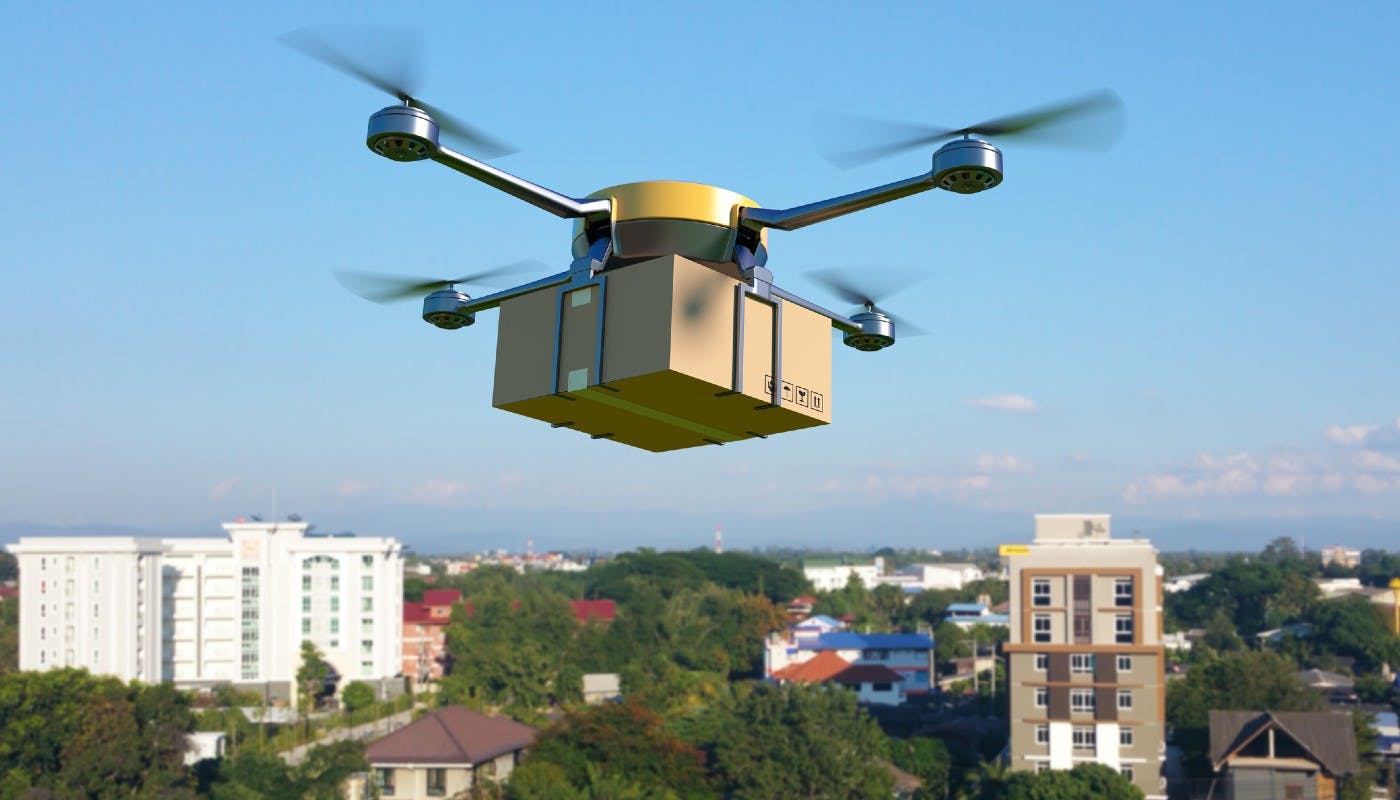Many logistics experts wonder if drones could solve several last-mile delivery challenges by transporting goods to customers without using roads. Some companies already take this approach, but potential cybersecurity threats exist for professionals to address before widespread adoption becomes feasible.
1. Attack Detection
Companies use intrusion detection platforms to identify suspicious network traffic patterns. Some tools automatically detect and respond to those events, taking predetermined steps based on their programming. Cybersecurity teams can then investigate and triage them according to estimated severity.
Cybercriminals often prioritize attacks with the biggest reach or most devastating consequences. They already disrupt online shopping in other ways, such as by creating malware that steals information typed into payment forms or sensitive details stored in browsers. Drone deliveries could become their next targets, especially once companies use them widely.
Consumers love the convenience of online shopping, but some experience trust crises if ordered products don’t meet expectations. The internet provides countless reviews, social media posts, and YouTube videos to help people choose items to buy. Evaluating all that information and finding the most trustworthy content in an advertising-driven world overwhelms some consumers.
Delivery drone hacks could upset them even more, especially if perpetrators steal high-value products or urgently needed items. Security professionals must develop robust, accurate, and easily deployable solutions to detect and stop potential attacks in time. As experts ponder the possibilities, some envision options that use widely accessible technologies, such as connected sensors.
A researcher focusing on cybersecurity, the Internet of Things, and big data analytics suggests equipping drones with edge-based machine learning models that identify possible network attacks. He also mentions how geofencing sensors could keep the autonomous vehicles out of restricted areas. Engineers who set the hardware to permit movement in specified zones might design it to give people supervising journeys from the ground immediate alerts of hackers attempting to circumvent those limitations.
2. Insufficient Security
Professionals developing delivery drones can take inspiration from other autonomous vehicles, such as robots that roll along sidewalks while carrying takeout food. These often have codes that people must enter to release the contents. Due to the rise of parcel thieves who watch for couriers’ vans and grab deposited goods soon after they arrive on doorsteps, cybersecurity experts should examine weaknesses tech-savvy adversaries may target.
One Arizona uncrewed technology program chair says drones without transport-layer security and encryption could become easy targets for cybercriminals. That doesn’t mean curious consumers should avoid getting goods delivered this way. The cybersecurity industry has relatively few examples of successful hacking attempts, although the risk could rise as these futuristic delivery vehicles become more popular.
Cybercriminals plan attacks for various reasons. Some prioritize the challenge of novel efforts. Others want the notoriety of cracking an emerging technology and capturing headlines. Amazon uses drones to deliver over 60,000 items to customers less than an hour after placing orders. Because the company is so well-known and controversial, it’s easy to imagine hackers trying to infiltrate its airborne parcel carriers.
However, the brand’s representatives have integrated security features into these vehicles, such as making them only release packages after reaching designated points and providing five-minute delivery time frames. The drones also hover about 13 feet from the ground, preventing easy vandalization.
Performing comprehensive security audits and closing identified gaps before widespread deployment increases safety and trustworthiness. Those preventive measures also appeal to consumers interested in these last-mile delivery possibilities because of the environmental benefits, more than convenience.
One comparison of parcels distributed by quadcopter drones and diesel trucks deemed the former choices saved 94% energy per parcel, making them greener options for e-commerce’s sustainable future.
3. Long Cybersecurity Processes
In the early days of any technology, people can predict the likely risks, but even those aware of wider developments cannot anticipate all the potential threats. Parties creating the earliest versions of the internet never considered problems with celebrity deepfakes and hackers using ChatGPT to create realistic-sounding scam emails.
However, cybersecurity experts addressed those issues after they arose. Professionals will need to do the same once cybercriminals learn and exploit delivery drone vulnerabilities by figuring out the best ways to identify and close security gaps.
Challenges also exist due to the differences among drones and the goals of the companies deploying them. Although Amazon’s teams have the resources and knowledge for tight security, executives from other enterprises may instruct their employees to do everything possible for quick deployment, treating it as an afterthought.
Despite those uncertainties, researchers have developed proactive solutions to protect drones from attacks. One group believes it can reverse engineer drones and other mid-scale cyberphysical systems in 30 days or less with a toolkit. It includes a suite that helps users find vulnerabilities, see exploitation mechanisms, and apply patches.
One project participant says cybersecurity professionals can already do these things, but the steps take months or years. Allowing them to go from noticing an issue to addressing it within a month provides the speed necessary for quickly finding and fixing problems. This responsiveness supports companies as they respond to changes. Even enterprises with well-formed plans for last-mile drone deliveries must consider how unpredictable factors may disrupt those intentions. Awareness and a willingness to pivot ensure relevancy in a rapidly changing market.
An Unknown Future for Delivery Drones
Although drones offer confirmed benefits, additional cybersecurity challenges may appear. Tackling the issues lowers risk and boosts customer confidence. These three areas are good starting points because experts already recognize their need for improvement. Security professionals should also expect their colleagues to develop several possible solutions and appreciate the learning occurring during development processes.








